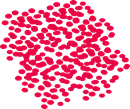The contents and the amount of dirty or wet nappies change day by day at first. These changes can help you know if feeding is going well.
 Most parents who breastfeed worry if their newborn is getting enough to eat. One way to check is to keep track of nappy changes. How many you change, and how they look.
Most parents who breastfeed worry if their newborn is getting enough to eat. One way to check is to keep track of nappy changes. How many you change, and how they look.
In the first few days you may notice that your baby’s poos are thick and dark green or black — these are your baby’s normal first poos, made up of meconium.
After this meconium has passed, the poos will change to a yellow colour, and become softer and runnier.
Each baby is different, but you can probably expect at least six wet nappies and at least two poopy nappies a day in the first few weeks.
When breastfeeding it can be difficult to know if your baby is getting enough milk. It is important to remember your baby only has a little tummy, and so will want small feeds, often.
Below is a list showing how your baby's nappies will change in the early days. The changes in the contents of your baby's nappy over the first week will let you know if your feeding is going well.
If your baby isn't having the amount of nappies shown below, it's important you tell your midwife or health visitor. This could be a sign your baby is not getting enough milk.
Colours of Poo
Babies poos do not all look the same. The colour of your baby's poo will change from when they are first born. It may also be different depending on how you have chosen to feed them.
You can use this guide below to see what is normal and when to seek advice from a GP.
 |
Meconium - This is the first new born poo your baby will do, this is normal in the first few days of life. |
 |
Mustard Yellow - Breastfed baby - It is usually runny and can appear grainy like French mustard. |
 |
Tan/Yellow-Formula fed baby - It will be thicker and smellier than breastfed babies poo. |
 |
Green - Can be normal, but may be a sign that your baby is not latching well, so speak to your health visitor or contact Just One Number if you are worried. |
 |
Red - This could mean there is some blood. This may be harmless but you should call your GP to get it checked. |
 |
Black -If your baby's poo is black after the first 5 days, you should get this checked by your GP. |
 |
White/Grey - If your baby's poo is white or grey in colour, call your GP as it may be a sign of a problem. |
 |
Urates - They usually look like pink/orange dust. They are normal but can be a sign your baby needs a little help to feed more often or more effectively. |
If your baby is less than 28 days old you can contact your local midwifery team or you can contact the Healthy Child Programme at any time following your baby's birth by calling Just One Number on 0300 300 0123 or texting Parentline on 07520 631590.
Our opening hours are 8am-6pm Monday to Friday (excluding bank holidays) and 9am-1pm on Saturdays.
Norfolk Healthy Child Programme has a team of infant feeding champions who can contact you by video call/telephone initially to discuss your questions and refer you to further help if required. All of our staff are trained to Unicef standards to provide you with the best possible breastfeeding support and advice.
It may help in the first instance to look again at our page on Positioning and Attachment or read the Essential Guide to Feeding & Caring for your Baby.
Norfolk’s Early Childhood and Family Service (ECFS) offers support for all parents and carers with children aged 0 to 5 years.
To speak to other Norfolk parents and carers, you can join our online community forum below.
Also in this section...